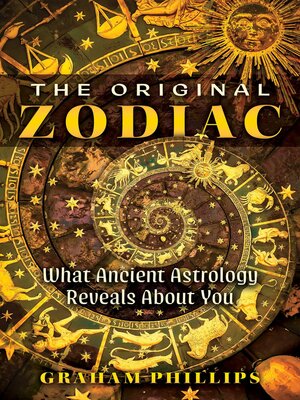
Sign up to save your library
With an OverDrive account, you can save your favorite libraries for at-a-glance information about availability. Find out more about OverDrive accounts.
Find this title in Libby, the library reading app by OverDrive.



Search for a digital library with this title
Title found at these libraries:
| Library Name | Distance |
|---|---|
| Loading... |
• Explores ancient Mesopotamian astrology, which originated with those who created Göbekli Tepe, and details the system's eighteen zodiac signs
• Shares the author's decades-long research to decipher the meanings and characteristics behind each of the original eighteen signs
• Shows how the original zodiac can enrich and expand our understanding of astrology, personal relationships, and our sense of self and destiny
Today the zodiac is divided into twelve signs through which the sun appears to travel in a year. A person's sign can influence their personality, physical characteristics, and fate. However, in ancient Mesopotamia, the first zodiac was divided into eighteen signs—different from the Western and Vedic systems in use today. The Original Zodiac reveals, for the first time in more than 4,000 years, this earliest known system of astrology.
The original Mesopotamian zodiac offered very different birth signs, including the Serpent, Swan, Crane, Horse, Wolf, and Eagle. This zodiac was recorded on a clay tablet that is now housed in the British Museum, cataloged as BM 86378, but there is no written record of how these signs were interpreted. Now, after decades of intensive research, Graham Phillips reveals the meanings of these mysterious signs and their relevance for our times.
To determine what traits might be shared by those born in each sign of the original zodiac, Phillips comprehensively surveyed hundreds of volunteers from diverse backgrounds. He measured each participant's likes, dislikes, hobbies, habits, employment, health information, and other pertinent aspects of their lives and identities. Not intended to replace or challenge our traditional understanding of astrology, his findings offer an original system to enrich our current knowledge of the personality, character, and destiny of those born in each of its enigmatic signs.
• Shares the author's decades-long research to decipher the meanings and characteristics behind each of the original eighteen signs
• Shows how the original zodiac can enrich and expand our understanding of astrology, personal relationships, and our sense of self and destiny
Today the zodiac is divided into twelve signs through which the sun appears to travel in a year. A person's sign can influence their personality, physical characteristics, and fate. However, in ancient Mesopotamia, the first zodiac was divided into eighteen signs—different from the Western and Vedic systems in use today. The Original Zodiac reveals, for the first time in more than 4,000 years, this earliest known system of astrology.
The original Mesopotamian zodiac offered very different birth signs, including the Serpent, Swan, Crane, Horse, Wolf, and Eagle. This zodiac was recorded on a clay tablet that is now housed in the British Museum, cataloged as BM 86378, but there is no written record of how these signs were interpreted. Now, after decades of intensive research, Graham Phillips reveals the meanings of these mysterious signs and their relevance for our times.
To determine what traits might be shared by those born in each sign of the original zodiac, Phillips comprehensively surveyed hundreds of volunteers from diverse backgrounds. He measured each participant's likes, dislikes, hobbies, habits, employment, health information, and other pertinent aspects of their lives and identities. Not intended to replace or challenge our traditional understanding of astrology, his findings offer an original system to enrich our current knowledge of the personality, character, and destiny of those born in each of its enigmatic signs.







